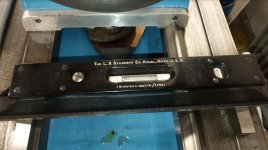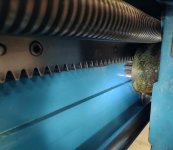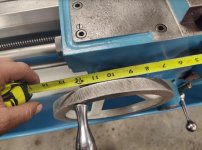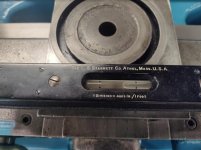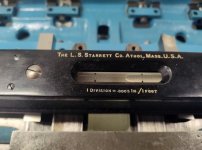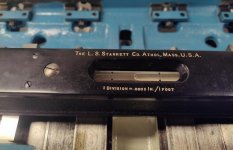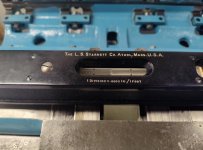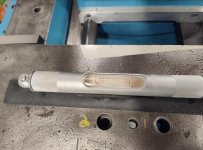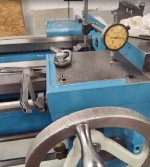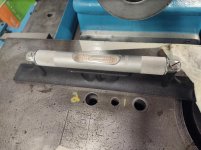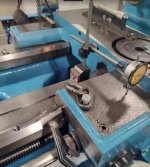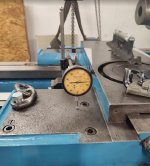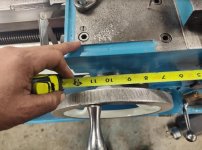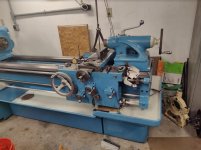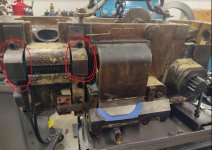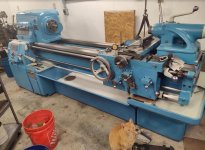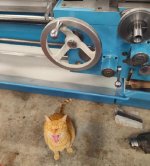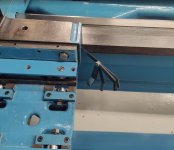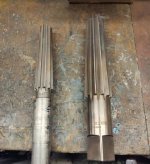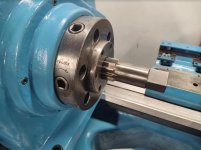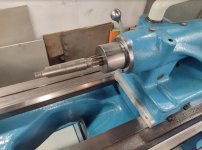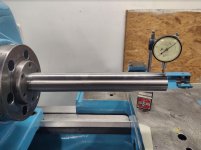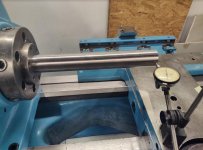Before I get to saddle, cross slide, and such, I will need to address other things first. Just talking it out now.
First and foremost would be the bed ways. "All things serve the ways" as I've heard it said.
Next in line after that would be headstock alignment to bed ways. As the cross and tailstock will need to be adjusted relative to spindle position.
Which brings up my next check. Checking headstock alignment to bed ways. I'm not particularly scared to lift the head stock on anything. I've had this head stock off already, and will do so again shortly.
I think popular theory is "that if you don't lift headstock, the alignment won't change". I don't think I could possibly disagree more. Things change. Machines get moved, maybe many times. Bumped in to, and all sorts of abuse, be it careless or accidental over the lifetime, which could be many many years. Also cast iron changes and grows. Test cuts can tell you something, but without jamming a test bar in the spindle, you will have unanswered questions. You simply don't know which way the spindle is pointing if you don't check.
One of the greatest accuracy improvements you can make is "getting everything pointed at center". Even with obscenely worn ways you can improve accuracy by getting head stock pointed at center, or even adjusting headstock to more closely fit the current bed wear.
I'm only doing a check now to see where I'm at, the real adjustment will come after bed ways are addressed. Getting started, I first want to lightly clean up spindle taper. I will do tail stock quill while I'm at it. The headstock taper on this machine is a No. 5MT, and the tail stock is No. 4MT. Here's the finish reamers:
View attachment 339365
On my lathe I can fit long or short 5MT in the spindle. Talking to Mike Thomas, his 13" Series 61 can only use the shorter 5MT.
I'm not looking to bore out the spindle. Just looking to de-burr and get dirt out. Mostly just turning by hand with a wrench and light pressure:
View attachment 339366
Also doing the tail stock. Put a little more time here to clean up the taper. Tail stock tapers receive a bit more abuse.
View attachment 339367
Test bar in, and running checks. I like my alignment checks from 4 points, at 12, 3, 6, and 9 oclock. 12 and 6 serving vertical, and 3 and 9 horizontal. Once I got my system down, I'll just check 12 and 9 oclock to see vertical and horizontal alignment.
Running the carriage with indicator mounted, to sweep the length of test bar. In this pic I'm showing .0055", but I had some run out, and indicator movement. After running the check a few times I'm calling it .004", and that is upward tilt of the spindle/headstock.
View attachment 339368
Running a sweep of horizontal at 9 oclock. I'm also calling it at .004", pointed toward rear of lathe:
View attachment 339369
So currently headstock is pointed upward by .004", and also pointed toward rear of lathe by .004". Again, I'm not adjusting now. But as I remove and reinstall headstock, I may take some corrective action to get those numbers closer to zero.



